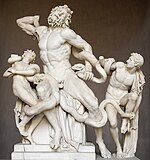Gregorian Tower

The Gregorian Tower (Italian: Torre Gregoriana) or Tower of the Winds (Italian: Torre dei Venti) is a square tower and early modern observatory located above the Gallery of Maps, which connects the Villa Belvedere with the Apostolic Palace in Vatican City. The tower was built between 1578 and 1580 to a design by the Bolognese architect Ottaviano Mascherino (who was credited with building the Apostolic Palace) mainly to promote the study of astronomy for the Gregorian Calendar Reform which was commissioned by Pope Gregory XIII and promulgated in 1582. It was then also known as the Tower of Winds. The tower was also called "Specola Astronomica Vaticana", a reference to the Vatican Observatory. Four stages of progressive development have occurred since it was first established. The tower was an edifice of great value for astronomical observations made using a sundial as they provided essential confirmation of the need to reform the Julian calendar.
Excerpt from the Wikipedia article Gregorian Tower (License: CC BY-SA 3.0, Authors, Images).Gregorian Tower
Rampa dell'Archeologia,
Geographical coordinates (GPS) Address Nearby Places Show on map
Geographical coordinates (GPS)
| Latitude | Longitude |
|---|---|
| N 41.905138888889 ° | E 12.454138888889 ° |
Address
Musei Vaticani
Rampa dell'Archeologia
00120 , Vatican City
Vatican City
Open on Google Maps










